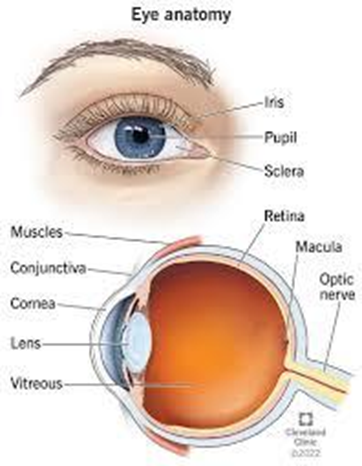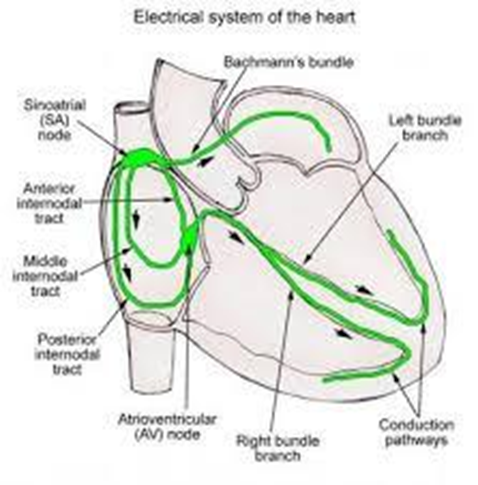Which of the following describes the retina?
is the colored part of the eye
Located in the posterior cavity
is the outermost layer of the eye
Produces aqueous humor
The Correct Answer is B
a: Is the colored part of the eye - This describes the iris, which is the colored part of the eye that regulates the size of the pupil.
b. Located in the posterior cavity: The retina is a layer of tissue located in the posterior cavity of the eye. It contains photoreceptor cells that convert light into neural signals, which are then transmitted to the brain via the optic nerve.

c: Is the outermost layer of the eye - The outermost layer of the eye is the sclera, a tough, white layer that helps maintain the shape of the eye.
d: Produces aqueous humor - Aqueous humor is produced by the ciliary body and is found in the anterior chamber of the eye, not in the retina.
Nursing Test Bank
Naxlex Comprehensive Predictor Exams
Related Questions
Correct Answer is B
Explanation
a. Purkinje fibers: Purkinje fibers are the last structures to receive the signal within the ventricles, causing them to contract.
b. Bundle of His: The correct sequence of the cardiac conduction system is as follows: The electrical impulse originates in the sinoatrial (SA) node, then travels to the atrioventricular (AV) node. From the AV node, the impulse travels to the Bundle of His. After the Bundle of His, the impulse travels through the bundle branches and finally reaches the Purkinje fibers, which facilitate the contraction of the ventricles.

c. Bundle branches: The electrical impulse for heartbeat originates in the SA node (sinoatrial node). It then travels to the AV node (atrioventricular node), which delays the signal before sending it to the Bundle of His. The Bundle of His splits into right and left bundle branches, which distribute the electrical signal to the Purkinje fibers in the ventricles, causing them to contract in a coordinated fashion.
d. SA node: The SA node initiates the electrical impulse, not receive it after the AV node.
Correct Answer is A
Explanation
a. Pyloric sphincter: This sphincter regulates the passage of chyme from the stomach into the duodenum.
b. Lower esophageal sphincter: This sphincter prevents the backflow of stomach contents into the esophagus.
c. Ileocecal sphincter: This controls the flow of material from the ileum of the small intestine into the cecum of the large intestine.
d. Internal anal sphincter: This sphincter controls the release of feces from the rectum but is not involved in the release of chyme
Whether you are a student looking to ace your exams or a practicing nurse seeking to enhance your expertise , our nursing education contents will empower you with the confidence and competence to make a difference in the lives of patients and become a respected leader in the healthcare field.
Visit Naxlex, invest in your future and unlock endless possibilities with our unparalleled nursing education contents today
Report Wrong Answer on the Current Question
Do you disagree with the answer? If yes, what is your expected answer? Explain.
Kindly be descriptive with the issue you are facing.
